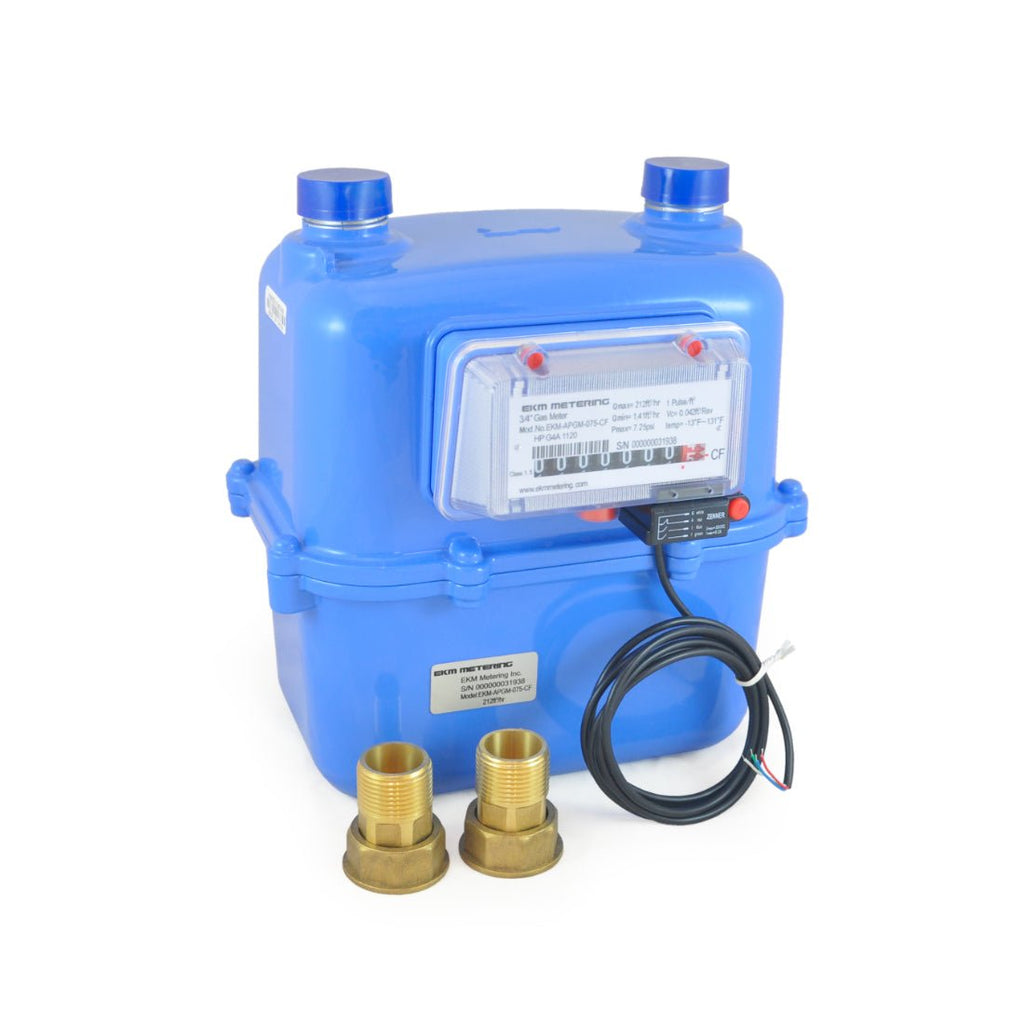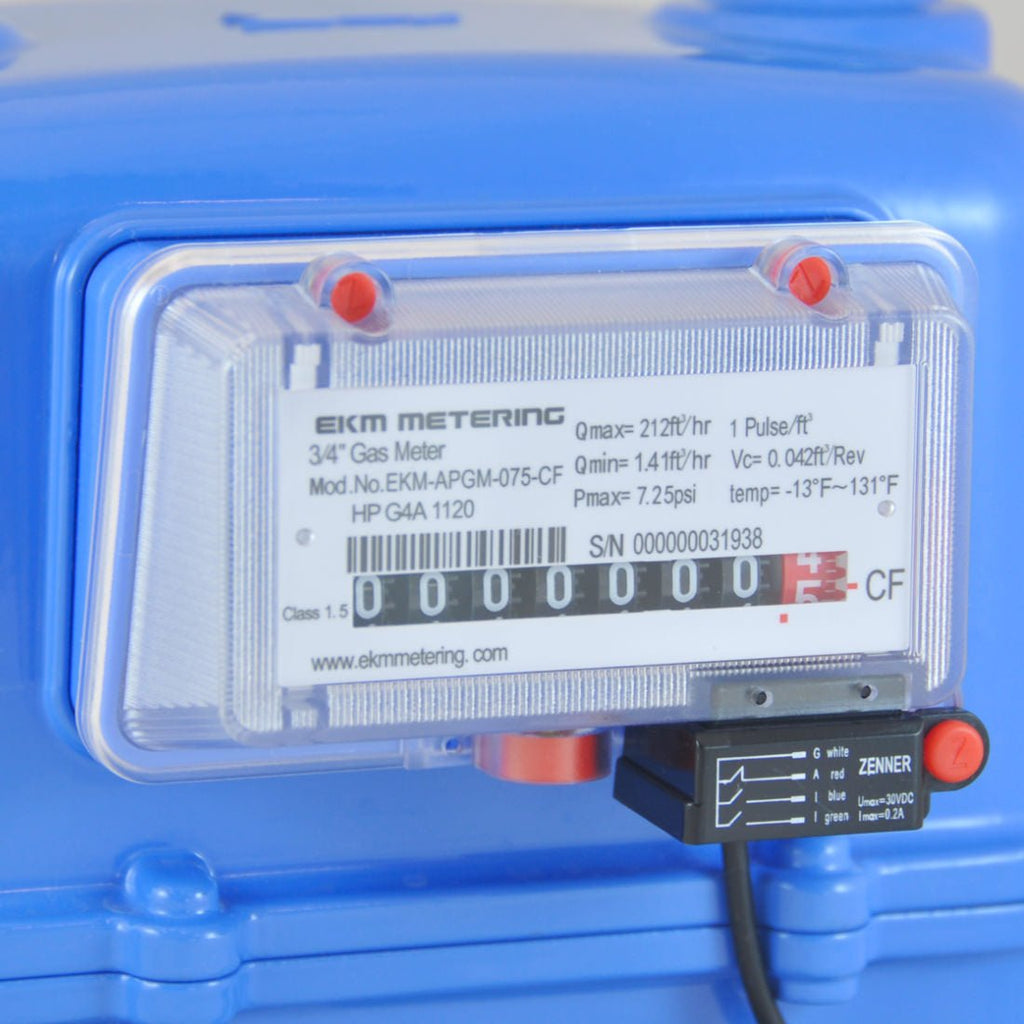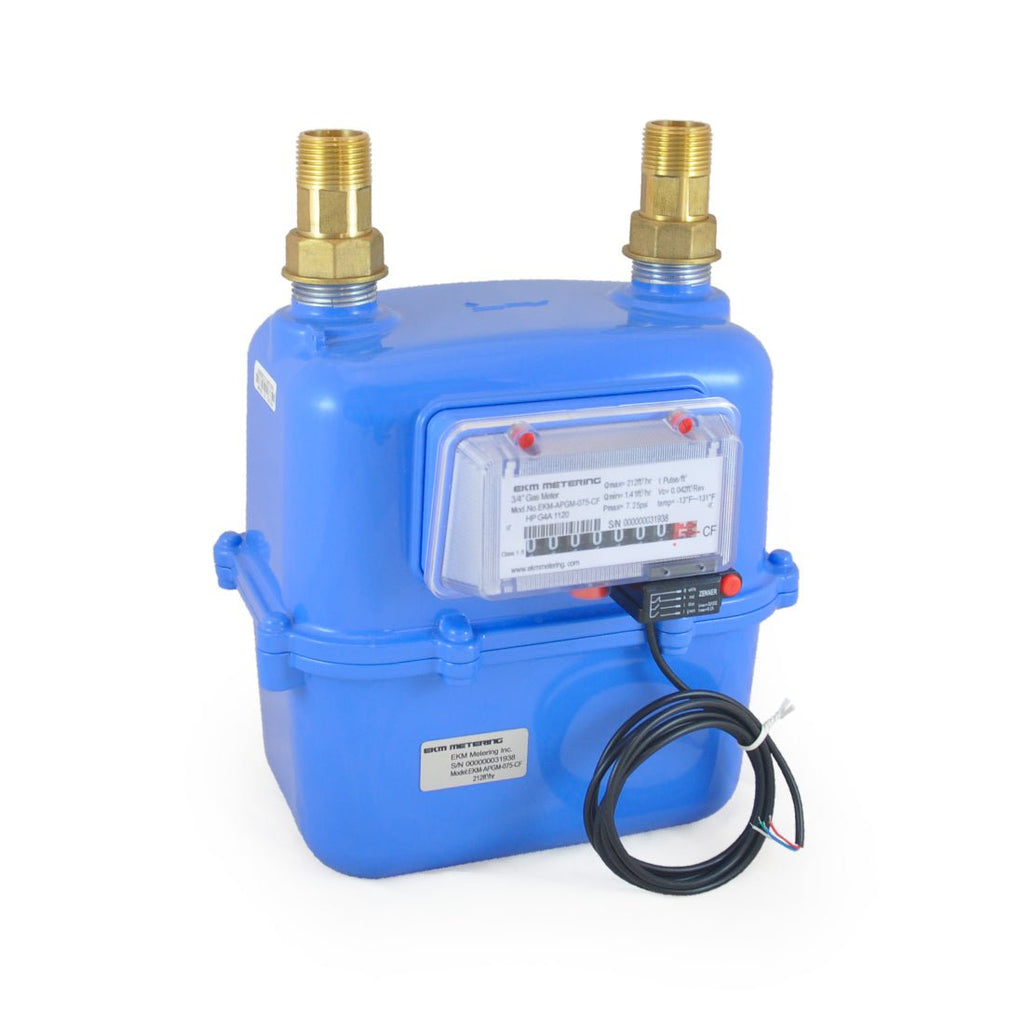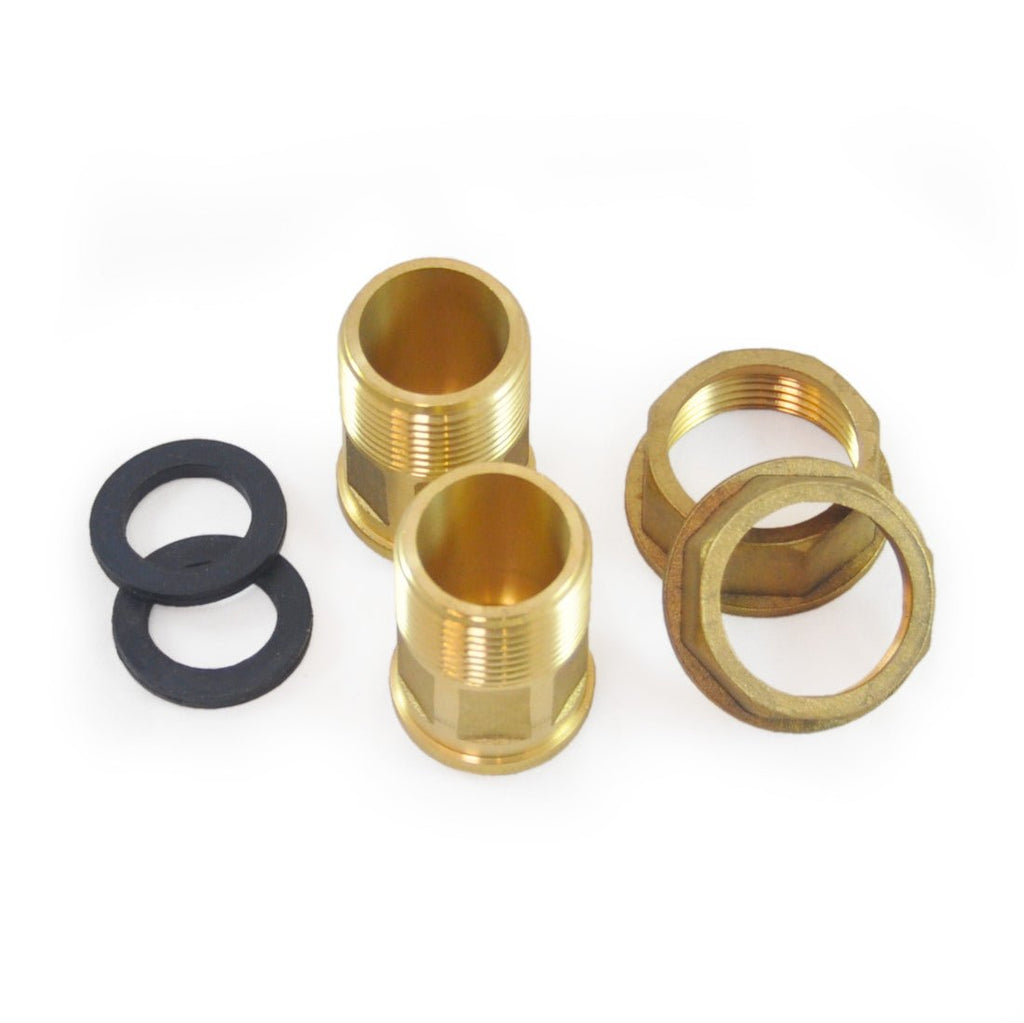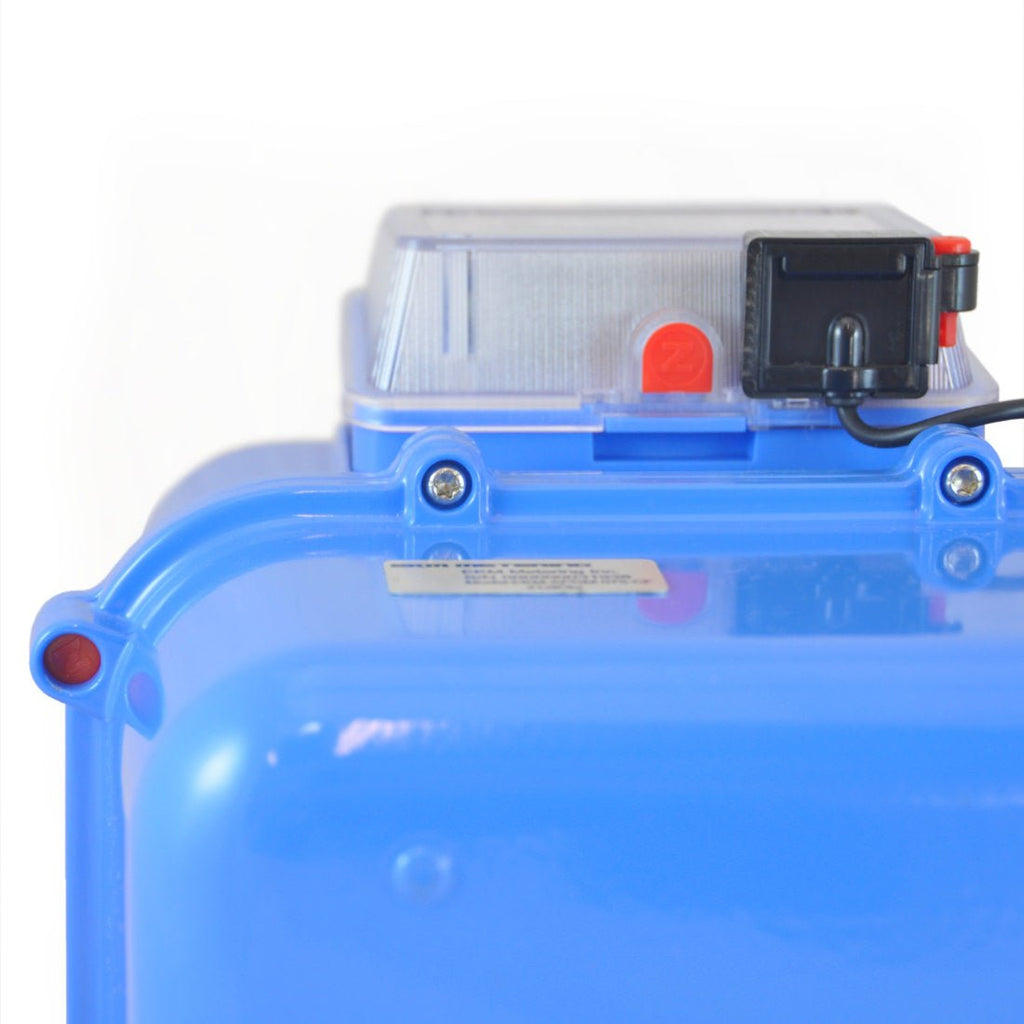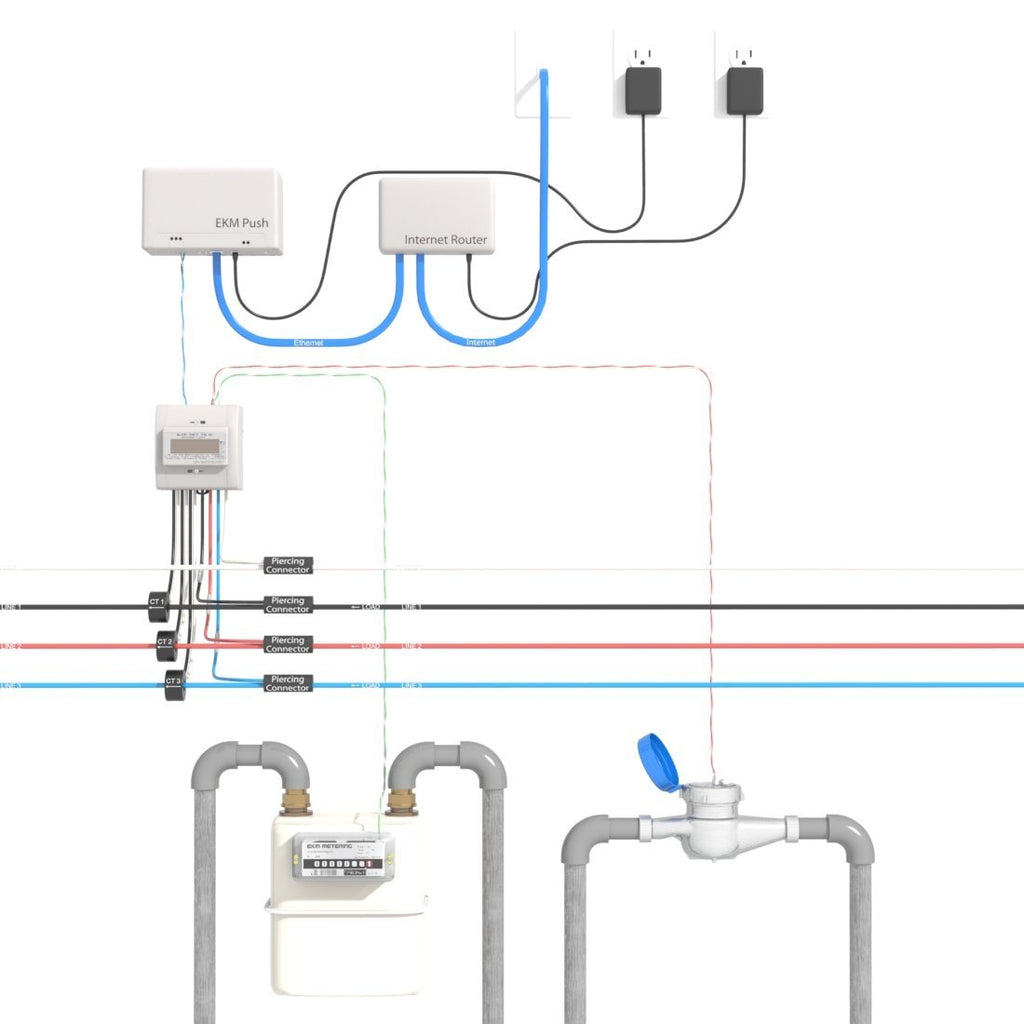3/4 Inch Pulse Output Gas Meter - Aluminum, Cold Temperature - APGM-075-CF
3/4" Pulse Output Gas Meter - APGM-075-CF. This is a great gas meter that can be read locally, or can be set up to be read remotely when paired with an Omnimeter Pulse v.4 and an EKM Push3 gateway.
The complete system provides your gas meter data in the cloud for free! No recurring fees of any kind.
View More
More information
Type: 3/4" Pulse Output Gas Meter
Mounting: Outdoor Mount
Units: Cubic Feet
Operating Temperature: -13 to +131 °F [-25 to 55 °C]
Pulse Output: 1 Pulse Per Cubic Foot
Dimensions: 222mm tall x 209mm wide x 170mm deep
Material: Cast Aluminum
Model: APGM-075-CF
Read your gas usage remotely too! Our Pulse Output Gas Meters operate like a normal gas meter. They also have the ability to be read remotely. For every cubic foot of gas that is metered, this gas meter produces an electrical pulse. The pulse output wires can be extended up to 10,000 ft.
The pulses can be measured and counted by our EKM Omnimeter Pulse v.4, which is our new pulse counting electric meter. This pulse counting meter has the ability to count pulses from up to three pulse-output devices. It also has the ability to control up to two relay switches. This allows you to turn thing on and off remotely.
Similarly, our new EKM-ioStack (beta) has the ability to count the pulse outputs from up to 4 pulse output devices. It has the added benefit of being powered by 12V DC instead of 120V AC like the Omnimeters, which makes it easier and safer to install.
When connected to a v.4 Omnimeter or ioStack, the gas meter can send pulse data the cloud with our EKM Push3 data system. The Push3 sends all of your meter data to our cloud database and inserts it into your personal account, where you can access it for free. In other words, with this system you can easily monitor gas usage, at an unlimited number of sites around the world, for free.
Encompass.io
Encompass.io is our free online meter management platform for monitoring data, managing meters, generating bills, and more. It is designed specifically for people who are remotely reading their meters via the Push3 system. This platform can be used to visualize data on customizable dashboards, visualize cost, monitor trends, group meters, and a lot more. Each meter and meter group in Encompass can also be set up to email you, and/or your tenant, PDF bills. Here is a sample PDF gas bill:
EKM Widget
You can use this meter to measure natural gas, gaseous propane (not liquid), air, or any other non-corrosive gas. We do not recommend that this meter be used to meter Hydrogen.
Simple 2-wire connection between gas meter and kWh meter.
No additional power source is required.
Pulse count can be read remotely using the free, remote reading, Encompass.io, EKM Dash desktop software, or EKM Widget.
Very reasonably priced gas meter, even if the pulse output is not used.
1 Pulse Per Cubic Foot (approx. 1 pulse per 0.0283 cubic meter).
Product Details:
1.) Dimensions: 222mm tall x 209mm wide x 170mm deep
2.) No power source required
3.) Pulse Rate: 1 pulse per cubic foot
4.) Casing: Aluminum
5.) Connection Thread: NPT 3/4 Inch
6.) Inlet and outlet separation (to center): 130 mm
7.) Direction of inlet: Left in, right out
8.) Nominal flow-rate (Qn): 141.3 ft3/h
9.) Minimum flow-rate (Qmin): 1.41 ft³/hr
10.) Transitional Flow Rate (Qt): 21.2 ft³/hr
11.) Maximum flow-rate (Qmax): 212 ft³/hr - Natural Gas: 219,420 BTU/hr - Propane: 527,456 BTU/hr at 60ºF (temperature dependent)
12.) Minimum Operating Pressure: 0.0735 PSIG
13.) Maximum Operating Pressure: 7.25 PSIG (21.75 PSIA)
14.) Pressure Loss: ≤ 0.03 psi 15.) Cyclic: 0.042 ft³/rev
16.) Permissible Error: - Qmin ≤ Q < 0.1 Qmax: ± 3% - 0.1 Qmax ≤ Q ≤ Qmax: ±1.5%
17.) Min. Recording Reading: 0.02 ft³
18.) Max. Recording Reading: 9999999.98 ft³
19.) Readout is in cubic feet, with resolution to tenths
20.) Operating temperature: -13 to +131 °F [-25 to 55 °C]
21.) Storage temperature: -4 to +140 °F [-20 to 60 °C]
22.) Service life: ≥10 years
23.) Weight: 4.85 lbs., or 2.2 kg
24.) Type: G4A
25.) Meter Design Standards: - EN 1359:1998/A1:2006 - 2014/32/EU(MID) - OIML R137:2012
26.) Index Cover: printed index cover of polycarbonate
27.) Surface Paint: polyester powder coat
28.) Wires: White is ground. Red is a tamper signal wire that is always closed unless a magnet is used to taper with the pulse output. Blue and Green are both pulse output wires that are normally closed but open once per cubic foot of gas that the meter reads.
Included:
1.) Gas meter and pulse output module
2.) 2x 3/4" NPT threaded adapters
3.) 2x nuts to hold the 3/4" NPT threaded adapters onto the gas meter
4.) 2x 3/4" rubber gaskets
For more information about our products and services, we encourage you to visit our online Knowledge Base, which provides spec sheets, videos, tutorials, FAQs, diagrams, and more.
Spec Sheet: 3/4 inch Pulse Output Gas Meter Spec Sheet
Customer Photo Gallery
Be one of the first to share photos of your installed meters! Click the button below to submit your photos and receive $10 off your next order once your post is approved!

